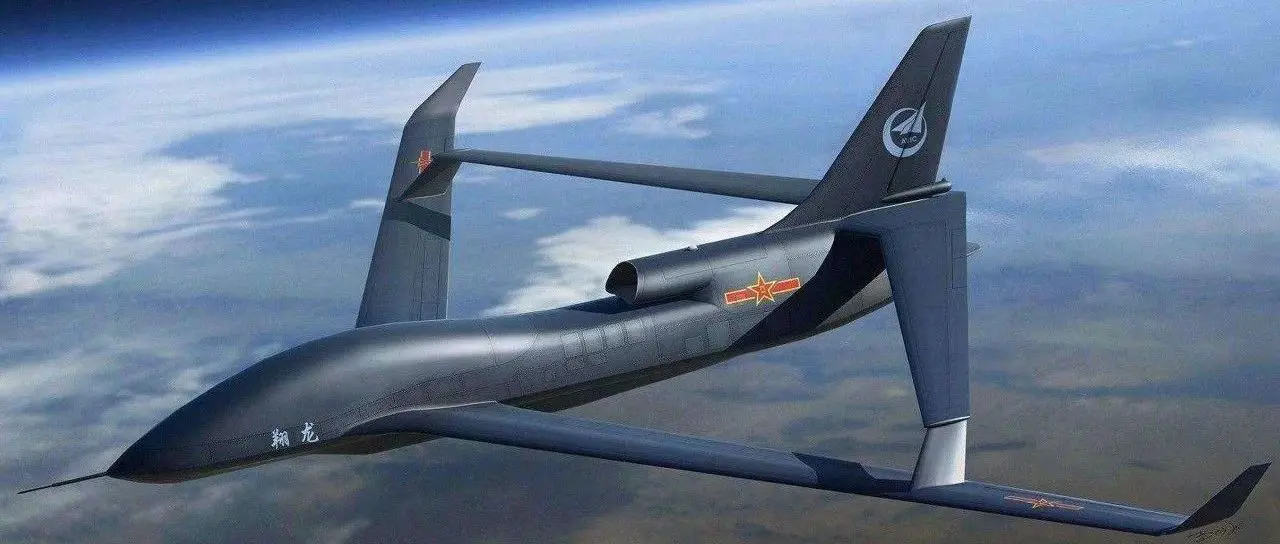On the potential of drones in future military operations

**
**
On the potential of drones in future military operations
Xu Tianxu, Mo Xilong, Yu Wei

[Abstract] This article delves into the multifaceted role of unmanned aerial vehicles (UAVs) in future military operations, outlining their current state of development, analyzing their applications in modern warfare, and uncovering their vast potential in future conflicts. It also provides a detailed analysis of existing operational shortcomings and offers targeted recommendations. The aim is to comprehensively present the full scope of UAVs in the military domain, providing valuable reference material for military strategy research, military technology development, and innovation in operational theory.
【Keywords】Drone|Military Applications|Future Warfare Potential
In modern military strategic layouts, drones hold a central position and come in various types, allowing for selection based on the needs of different combat missions. For reconnaissance, advanced sensing equipment enables them to break through defensive barriers, such as the U.S. "Global Hawk," which can perform high-altitude, high-resolution imaging reconnaissance. For surveillance, they rely on aerodynamic and energy systems for long-duration cruising, like Israel's "Heron," which can stay airborne for several days. In terms of target designation and electronic warfare, drones are equipped with relevant devices to disrupt enemy systems and designate targets. With technological advancements, drones are transitioning from auxiliary roles to becoming core combat forces, reshaping combat modes, altering the balance of power, and holding significant potential for future battlefields.
1. The Application of Drones in Modern Warfare
**
**
Reconnaissance and Surveillance
**
**
Drones have demonstrated exceptional performance in the reconnaissance and surveillance aspects of modern warfare, becoming a core means of critical information acquisition. During the Russia-Ukraine conflict, both sides extensively deployed drones for reconnaissance missions. The drones used by Ukraine possess strong maneuverability and advanced reconnaissance equipment, conducting multiple reconnaissance operations on Russian military deployments and logistical supply lines.
(2) Combat Strikes
In the realm of combat operations, the significant role of unmanned aerial vehicles (UAVs) has become increasingly prominent. During the Nagorno-Karabakh conflict, Azerbaijan skillfully utilized Israeli-made "Harop" drones and its own "Harop" drones to conduct precise strikes against Armenian ground military facilities and air defense systems. This fully demonstrated the powerful operational effectiveness of UAVs in modern warfare, showcasing their formidable deterrence and strike capabilities.
(3) Electronic Warfare and Jamming
Drones play a unique and critical role in the fields of electronic warfare and jamming. According to media reports, the U.S. military's "Predator" drones will be equipped with electronic attack capabilities, which can be used to jam enemy radar and target positioning systems, significantly reducing the opponent's combat effectiveness. With their flexible mobility, drones can quickly reach designated jamming areas and carry out targeted jamming in complex electromagnetic environments, creating favorable combat conditions. They have become an indispensable force in modern electronic warfare.
2. The Potential of Drones in Future Warfare
(1) Potential for Intelligent Autonomous Operations
**
**
With the rapid advancement of artificial intelligence technology, unmanned aerial vehicles (UAVs) will possess highly intelligent autonomous combat capabilities in future warfare. They can autonomously make decisions and execute missions based on pre-set combat procedures and real-time battlefield situational awareness, such as autonomously planning flight paths, searching and identifying targets, and selecting the optimal timing and methods for attacks. When faced with complex and ever-changing battlefield environments, UAVs can quickly analyze vast amounts of data and react much faster than human operators, significantly enhancing combat efficiency.
(2) Full-Domain Combat Potential
In the future, drones are expected to achieve full-domain combat objectives, capable of overcoming the limitations of harsh natural conditions such as high mountains, deep oceans, polar cold, and desert heat, and successfully executing combat missions. In mountainous combat scenarios, drones can fully utilize their excellent low-altitude flight performance and terrain-matching technology to maneuver flexibly between valleys, conducting reconnaissance and strikes on enemy targets hidden deep in the mountains, completely unaffected by rugged terrain or inaccessible roads. In terms of maritime operations, large long-endurance drones can take off from land or ships to conduct continuous patrol and surveillance over vast ocean areas, effectively searching for traces of enemy ships and submarines, thereby eliminating geographical limitations in warfare.
(3) Stealth and Hypersonic Penetration Potential
**
**
In the future, significant breakthroughs in stealth technology and hypersonic flight technology for drones will be achieved, granting them formidable stealth and hypersonic penetration capabilities. By employing advanced radar-absorbing materials, specialized aerodynamic designs, and optimized engine intake and exhaust nozzle treatments, drones can effectively reduce their radar cross-section and infrared signatures, making them "invisible" to enemy air defense detection systems. This greatly enhances their survivability and success rate in penetration missions. Simultaneously, the development of hypersonic drones will further compress the reaction time of enemy air defense systems, making it difficult for adversaries to organize effective defensive interceptions.
(4) Potential for deep integration with other combat forces
**
**
The deep integration of unmanned aerial vehicles (UAVs) with other combat forces holds immense potential in future warfare. Collaborative operations between manned and unmanned aircraft will revolutionize traditional air combat models. Manned aircraft, leveraging the experience, judgment, and ability of pilots to handle complex environments, will dominate the decision-making process in combat. Meanwhile, UAVs, with their small size, agility, low cost, and immunity to casualties, will undertake high-risk missions. When breaching enemy air defense networks, UAVs can lead the way to divert firepower and coordinate attacks from multiple directions, optimizing resource allocation. This allows manned aircraft to focus on critical strikes and complex tactical executions, creating a formidable air combat synergy. In ground operations, UAVs serve as invaluable assistants to infantry, providing real-time reconnaissance of enemy forces and firepower positions. This enables ground troops to gain a comprehensive understanding of the battlefield, precisely guide artillery and missile strikes, and reduce ammunition waste and collateral damage. This deep integration transforms future warfare into a highly coordinated, multi-dimensional, and comprehensive confrontation, driving the military combat system towards a fully integrated, intelligent, and collaborative evolution.
III. Shortcomings of Drone Warfare
The anti-interference capability needs to be improved.
In complex electromagnetic environments, the communication, navigation, and control systems of unmanned aerial vehicles (UAVs) are highly susceptible to enemy electronic interference. Once interfered with, UAVs may experience severe consequences such as loss of contact, deviation from their flight path, or even being hijacked by the enemy. For instance, during high-intensity electronic warfare exercises, some UAVs lost control instantly and crashed directly due to strong electromagnetic pulse interference, highlighting their vulnerability to complex electromagnetic attacks. This significantly impacts their combat effectiveness and mission success rate, becoming a critical limitation that restricts the operational performance of UAVs in complex electromagnetic environments.
(2) There is a bottleneck in endurance capability.
Currently, most drones are limited by battery technology or fuel capacity, resulting in relatively short endurance. Long-duration combat missions often require frequent energy replacement or replenishment, which not only restricts their operational range but may also affect the progress of operations at critical moments. For instance, some drones performing long-range reconnaissance missions cannot continuously monitor target areas due to insufficient endurance, leading to interruptions in intelligence gathering. This severely hampers the enhancement of drones' capabilities for long-range and sustained operations, making it difficult to meet the demands of modern and future warfare for drones to perform long-duration, large-scale combat missions.
(3) Limited load capacity
**
**
The size and structure of drones determine that they cannot carry a large amount of heavy weaponry or large reconnaissance equipment like manned aircraft. This, to some extent, limits their striking power and the comprehensiveness and accuracy of intelligence gathering. For instance, when striking fortified targets, the small munitions carried by drones may not cause substantial damage to the targets. For example, a certain type of attack drone has a maximum payload of only a few hundred kilograms, making it difficult to effectively destroy large underground bunkers and other fortified targets, thereby limiting the operational effectiveness of drones in high-intensity combat scenarios.
IV. Recommendations
**
**
(1) Enhance Anti-Interference Capability
Vigorously develop anti-interference technologies and equipment. The application of encrypted communication technologies, such as quantum encrypted communication in drone data transmission, is gradually advancing. Its encryption strength far exceeds traditional encryption methods, effectively preventing information theft and interference. Frequency agility technology enables drones to quickly switch communication frequencies when subjected to interference, avoiding interference sources. Develop new anti-interference materials such as electromagnetic shielding composite materials to reduce the impact of external electromagnetic interference on the internal systems of drones. At the same time, construct a multi-level electromagnetic protection system. At the hardware protection level, strengthen the electromagnetic shielding design of the drone body to ensure its stable operational effectiveness in the intense electronic warfare environments of future battlefields.
(2) Breaking Through the Endurance Bottleneck
**
**
Continuously invest resources in battery technology innovation, developing high-energy-density batteries such as solid-state batteries. Solid-state batteries offer advantages like high energy density and good safety, potentially increasing the single-flight endurance of drones several times over. For fuel-powered drones, optimize engine design and adopt new efficient combustion technologies to improve fuel efficiency. Additionally, actively explore new technologies for aerial refueling or energy replenishment, such as laser energy transmission technology, which uses ground or airborne laser emitters to transmit energy to drones, thereby extending their operational capabilities in missions and enhancing their application effectiveness in scenarios like long-range operations and continuous surveillance.
(3) Enhance Load Capacity
Starting from materials science and structural design, lightweight and high-strength materials such as carbon fiber composites are used to reduce the weight of the drone while ensuring structural strength. The drone's body structure is optimized with new design concepts, such as biomimetic structural design, to increase payload space. Simultaneously, the development of miniaturized, high-performance weapons and reconnaissance equipment is pursued. Through Micro-Electro-Mechanical Systems (MEMS) technology, the miniaturization and integration of sensors and other equipment are achieved. Utilizing modular design concepts, drones can carry more functional mission equipment under limited payload, enabling them to play a greater role in combat strikes and intelligence reconnaissance missions.
V. Conclusion
Unmanned aerial vehicles (UAVs) hold immense potential in future military operations. Their capabilities in intelligent autonomous combat, all-domain operations, stealth and hypersonic penetration, as well as deep integration with other combat forces, will profoundly alter the face of warfare. By vigorously developing related technologies and equipment, and continuously investing resources to innovate key technologies, UAVs will play an even more significant role in military operations, driving continuous development and progress in the military field, and shaping a new form and structure of future military operations.
references
China Aviation Industry Corporation. White Paper on the Development of UAV Systems/. (--)--.
http://www.avic.com/cn/xwzx/jqyw/665828.shtml.
Hu Shengliang, Wu Zhaodong, Xu Jianghu, et al. Core Technologies and Applications of UAV Swarms in Maritime Operations. Cruise Missiles, (): -.
Du Zibing, Zhang Lifeng, Chen Jingzhi, et al. Key Technologies for Flight Test Demonstration of Manned/Unmanned Aerial Vehicle Cooperative Combat. Aero Weaponry, (): -
Cai Baojie, Liu Dong, Wang Qipeng, et al. Analysis of Anti-Micro and Mini UAV Technologies in Urban Warfare. National Defense Science and Technology, (): -.
Editor of this issue: Chang Shaocheng
This issue reviewed by: Lin Yingxi
Layout Design: Zhou Kaikai
Article Source: "China Military-to-Civilian Magazine"
Collaboration Email: .
Submission email: .
